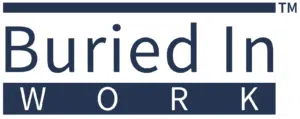Are you facing the daunting task of starting probate in Minnesota? Understanding the probate process and its requirements can help ease the burden during this challenging time. In this article, we will guide you through the essential steps involved in initiating probate in Minnesota, from filing the necessary paperwork to appointing an executor or administrator. By the end of this guide, you will have a clear understanding of what is required to navigate the probate process successfully.
Understanding Probate in Minnesota
Probate is the legal process through which a deceased person’s assets are distributed and debts are paid off under court supervision. In Minnesota, probate is necessary to transfer assets from the deceased to the rightful beneficiaries. The probate process ensures that the deceased person’s final affairs are settled according to the law.
Legal Code Reference: Minnesota Statutes Chapter 524
It is essential to familiarize yourself with the legal code governing probate in Minnesota to ensure compliance with all legal requirements. Minnesota Statutes Chapter 524 outlines the probate laws in the state and provides guidance on the procedures to be followed during the probate process.
Initiating the Probate Process
The first step in starting probate in Minnesota is to file a petition with the probate court in the county where the deceased person resided. The petition should include essential information, such as the deceased person’s name, date of death, and a list of their assets and debts. It is advisable to seek the assistance of an experienced probate attorney to ensure that the petition is filed correctly.
Appointing an Executor or Administrator
Once the petition is filed, the court will appoint an executor if the deceased person had a will or an administrator if there was no will. The executor or administrator is responsible for managing the deceased person’s estate, including collecting assets, paying debts, and distributing property to beneficiaries. It is crucial to select a trustworthy and competent individual to serve in this role.
Inventorying Assets and Debts
After being appointed, the executor or administrator must inventory the deceased person’s assets and debts. This process involves identifying and valuing all assets, such as real estate, bank accounts, investments, and personal property. Additionally, the executor or administrator must determine and settle any outstanding debts owed by the deceased.
Distributing Assets to Beneficiaries
Once all debts have been paid off, the executor or administrator can distribute the remaining assets to the rightful beneficiaries according to the terms of the will or Minnesota intestacy laws if there is no will. It is essential to follow the proper legal procedures to ensure that the distribution of assets is carried out correctly.
Final Thoughts on Initiating Probate in Minnesota
Starting probate in Minnesota can be a complex and time-consuming process, but with the right guidance and support, you can navigate it successfully. By following the steps outlined in this article and seeking the assistance of a knowledgeable probate attorney, you can ensure that the probate process is carried out efficiently and in compliance with Minnesota probate laws.
Buried in Work’s Additional Resources
Buried in Work provides Minnesota state-specific service provider directories and information related to estate preparation, end-of-life tasks, and estate transition information. Click here to learn more.
If you have feedback, questions, or ideas for future articles or Information Hubs, please contact us. Your insights help us create valuable content.


